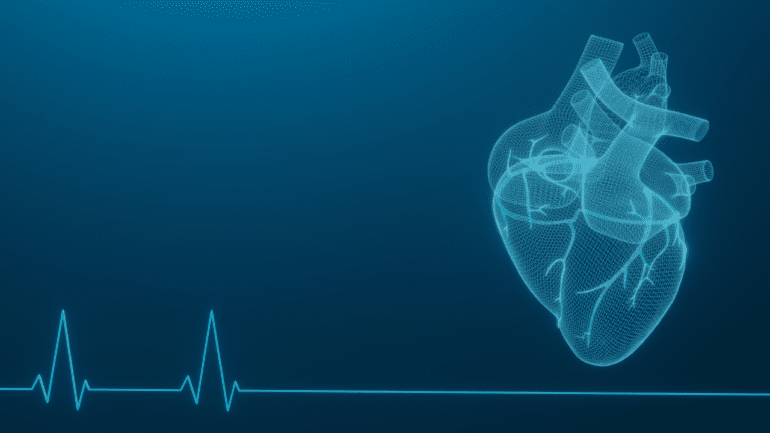TL;DR:
- Edge Impulse introduces a groundbreaking heart rate algorithm, claiming it’s the smallest and most precise in the industry.
- The algorithm uses light-based sensors to monitor heart rate and variability, providing valuable health insights.
- It operates with exceptional memory efficiency, diagnosing atrial fibrillation, falls, sleep patterns, stress levels, and activity changes.
- Edge Impulse extends its algorithm expertise to body temperature, movement, posture tracking, and brain activity monitoring.
- Real-time data dashboards and research data lakes enhance algorithm performance.
- This innovation significantly reduces R&D costs for unique algorithms.
- Edge Impulse’s solutions negate the need for time-consuming algorithm refinement.
- The company’s infrastructure supports centralized and decentralized clinical investigations, ensuring scalability and dataset diversity.
Main AI News:
The pervasive influence of machine learning continues to permeate every facet of our existence, spanning across diverse domains. This burgeoning technology is steadily ingraining itself into our daily lives, proving indispensable in manifold applications. Within the realm of medicine, its significance cannot be overstated, as it assumes a pivotal role in enhancing healthcare practices. Machine learning is, undeniably, the vanguard of transformation in how we confront medical challenges, from discerning ailments to predicting patient prognoses. This, in turn, ushers in a new era of enhanced patient care and cutting-edge medical exploration.
Enter Edge Impulse, a trailblazing entity specializing in on-device machine learning and artificial intelligence, poised to redefine the landscape. In a watershed moment, they have unveiled what is touted as the most diminutive and precise heart rate measurement algorithm the world has seen. Notably, this technological marvel is designed to operate on a mere one-sixteenth of the memory footprint when juxtaposed with its counterparts.
At its core, this groundbreaking algorithm functions as a veritable sentinel for the well-being of our autonomic nervous system, intricately monitoring the ebbs and flows of our heart rate and the intervals separating each beat. The equilibrium of our overall health, encompassing the vitality of our heart, stress levels, and the swiftness of our recuperation post-exertion, hinges upon this delicate equilibrium.
The mechanism through which this innovation operates is nothing short of ingenious. It harnesses a simplistic sensor, gauging the light that permeates our skin—a photoplethysmogram. This technology is readily found in wearables adorning our fingers, significantly elevating the precision of heart rate and heart rate variability measurements. The criticality of these measurements cannot be overstated, as they form the bedrock for in-depth inquiries into cardiovascular physiology and health. Heart rate variability (HRV), a nuanced metric, assesses the temporal variances between successive heartbeats, extending beyond the conventional measurement of heart rate per se.
The algorithm primarily relies on light-based sensors akin to those nestled within fitness bands and smartwatches, yet it is equally adaptable to electrocardiogram (ECG) sensors. Remarkably efficient, it operates with an economy of memory usage, a mere fraction of what its closest competitor demands. Its capabilities are expansive, encompassing the diagnosis of atrial fibrillation, fall detection, sleep monitoring, stress quantification, and the discernment of shifts in activity levels.
The repertoire of Edge Impulse is not confined solely to heart rate-related pursuits. Their algorithms extend to the measurement of body temperature, movement surveillance, and the tracking of posture, in addition to delving into the realm of brain activity via electroencephalograms (EEG). Further reinforcing their commitment to advancement, Edge Impulse has introduced real-time data dashboards and a research data lake for the enhancement of these algorithms.
Significantly, this innovative approach translates into substantial cost savings in research and development (R&D), rendering the production of unique algorithms more accessible. The researchers at Edge Impulse emphasize that their HR/HRV solutions are steeped in modern algorithms, thus negating the arduous and time-consuming process of algorithm refinement.
But the saga doesn’t conclude here. Edge Impulse extends an offering of robust infrastructure, facilitating the expansion of centralized and decentralized clinical investigations, catering to both small-scale and large-scale subject groups. This scalability is a linchpin in the pursuit of comprehensive testing and validation, assuring diversity in the dataset employed and eradicating model biases.
Conclusion:
Edge Impulse’s innovative heart rate algorithm and healthcare suite signify a pivotal moment in wearable technology and healthcare. Their cost-effective solutions, precision, and scalability position them as a formidable force in the market, promising a future where technology and healthcare seamlessly converge for the betterment of patient care and medical research.

